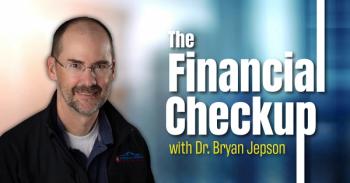
Cost, not access, is underlying problem facing American healthcare
The current conversation fails because it does not address the fundamental barrier to healthcare access - which is not insurance coverage, but rather the cost of healthcare coverage.
Editor’s Note:
The House of Representatives vote to pass the
Further reading:
The current conversation fails because it does not address the fundamental barrier to healthcare access - which is not insurance coverage, but rather the cost of healthcare coverage.
Anish Koka, MD
Consider the bill a friend of mine who has health insurance through her employer recently received after her daughter had an echocardiogram and an ECG done - $4800 for the echocardiogram, $1200 for the ECG. Last I looked, Medicare pays about $12 for an ECG, and about $140 for an echocardiogram. The facility was out of network, so the insurance company paid about 80%, leaving the remainder of approximately $1000 as the patient's balance.
This raises the interesting question: Are insurance companies forced to pay what hospitals charge, or do hospitals charge what insurance companies will pay?
Hot topic:
The truth is somewhere in between: both parties are complicit. Insurance companies turn out to be very poor stewards of your money. Hospitals, emboldened and strengthened by consolidation that reduces competition, are more than happy to set outlandish charges that insurance companies will pay. It is a cruel irony lost on most that the Democrats, who were supposed to be the party of 'adults', the party of technocrats, the party that traditionally speaks for the common man has a platform built on an individual mandate to buy health insurance and support this hospital-insurance nexus.
Simply put, those attempting to preserve the current system want to force Americans to pay a monthly premium to health insurance companies attached to deductibles that are high enough to ensure that the $1200 ECG will be subsidized by your bank account. The current solution proffered for those that don't have this type of cash lying around is to have the taxpayer pick up the exorbitant bill.
Further reading:
Currently, low-income patients qualify for tax credits that amount to subsidies from the federal government to insurance companies to keep costs low. While this is laudable and certainly a good deal for sick patients that are poor, the path is one that is unsustainable even for the richest country on the planet. Perhaps even more damning, this approach still leaves around 20 million patients without healthcare.
Healthcare's access problem is its cost problem. Lower the unit price of care, and the path to universal access to healthcare becomes much easier. Interesting things happen in healthcare arenas free of third-party payers. One such example is coronary calcium scans - low dose CT scans of the chest that demonstrate the presence of calcium in the coronary arteries. Using this tool to screen patients is a controversial topic among cardiologists, and insurance companies have refused to pay for this since its inception.
Popular online:
Remarkably, all this has done is make a coronary calcium scan affordable to almost everyone. Indeed, in any given city almost every hospital offers this scan. (In Philadelphia, for example, the cost runs from roughly $50 to $185). Hospitals understand in this case that you can't sell what the buyer can't afford to buy.
The effects of the deep pockets of third-party payers that are poor negotiators is even more profound. It trickles down to affect the very cost of goods. Sellers of stress test machines, for instance, know all too well what Medicare pays for stress tests, and set their charges accordingly.
In 2010 Medicare chose to reduce reimbursements for stress nuclear imaging studies by 36%. Many practices fled to join hospitals which had been spared these cuts - but nuclear imaging in the outpatient setting never actually died as feared. The cost of doing imaging simply got lower, leaving the cardiologists who survived with lower, but still manageable margins.
Editorial:
There are at least two approaches to lowering healthcare costs- either have an authority set prices (the government of India recently started setting a ceiling for the price of coronary stents), or reduce the imprint of deep-pocketed third-party payers in the healthcare market.
The wrong thing to do is to listen to the supposed defenders of patients seeking to preserve the right of Americans to keep paying into a broken system that enriches a precious few, bankrupts the nation and keeps healthcare out of reach for millions of Americans.
Dr. Koka is a cardiologist in private practice in Philadelphia.
Newsletter
Stay informed and empowered with Medical Economics enewsletter, delivering expert insights, financial strategies, practice management tips and technology trends — tailored for today’s physicians.














